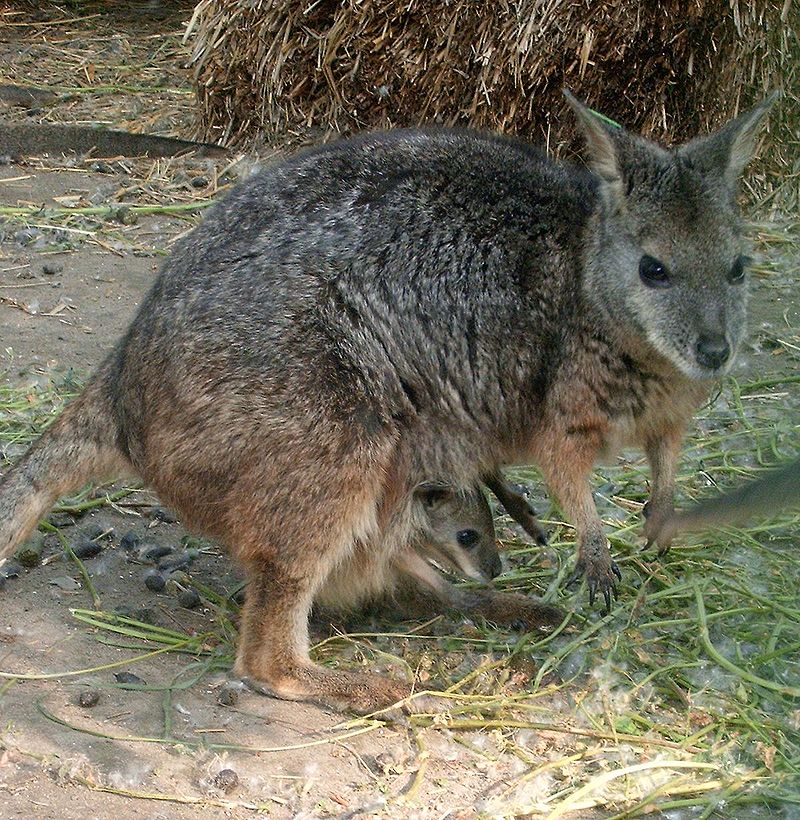
When I think of marsupials, what comes to mind is an image of a mother carrying her young (joey) in a pouch. Contrary to popular belief, however, mother tammar wallabies (Macropus eugenii) have an internal functioning placenta. Albeit, it only develops near the end of their short pregnancy (a mere 26.5 days), just before the developing offspring moves from the uterus to the pouch for further development and nursing. A new study published in eLife examined gene expression in both the placenta and mammary glands of mother tammar wallabies.
What the new study found is that just before birth of the joey, the marsupial placenta begins to express genes similar to those found early on in pregnancy in placental (aka: eutherian) mammals. In contrast, gene expression patterns in the mammary glands of nursing wallabies were similar to those expressed during late stage fetal development in the placenta of eutherian mammals. Milk composition and lactation in wallabies are very complex. The idea is that lactation in marsupials may be an alternate evolutionary strategy to development within a eutherian placenta as it allows mother wallabies to regulate which molecular signals and nutrients they provide their developing offspring. In fact, mother wallabies can produce milk with different compositions from adjacent mammary glands to feed young of varying ages.
Sources:
Guernsey MW, Chuong EB, Cornelis G, Renfree MB, Baker JC. Molecular conservation of marsupial and eutherian placentation and lactation. eLife. 2017;6:e27450
Nicholas K, Simpson K, Wilson M, Trott J, Shaw D. The Tammar Wallaby: A Model to Study Putative Autocrine-Induced Changes in Milk Composition. Journal of Mammary Gland Biology and Neoplasia. 2: 299-310, 1997.

